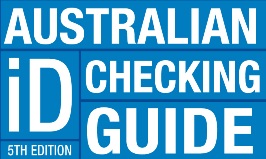4.5 Evidence of age
|
By law, licensees, staff, police and OLGR compliance officers can require a young person to produce identification to verify their age. A person commits an offence where they fail to produce prescribed evidence of age or refuse to provide their details. What do you need to know when checking evidence of age documents? |
|
|
David Hamley |
David Hamley, Licensee, tells how his staff require evidence of a patrons age to ensure that minors are not served alcohol.
You need to have the Flash Player installed in your browser in order to use the audio player.
If we suspect they’re under age, and it’s a difficult thing to pick up on—girls in particular, from a very young age, can look mature. Personally I’ve had a lot of trouble with it. So my approach is to ask anybody who looks as if they’re in that zone for identification, and that’s the attitude we take right through our management and bar staff, so anyone on the staff, not just the managers, will ask if they’re at all in doubt. So we ask for identification and we insist on a driver licence, and if they don’t have that then they need some form of photo ID or something that will give us an excellent chance. The driver licence is obviously a good one, it has a photo, it has a signature, it has the address, it has the date of birth, and it’s relatively tamper-proof. The other form of identification which is suitable and very handy from our point of view is the RTA card which carries a photo and a signature. And if we’re not satisfied, our clear instruction under the law and with the advice of police that I’ve dealt with is that if you’re in doubt, chuck ‘em out. You simply have to refuse them service and ask them to leave. |
Evidence of age
If a person who appears to be under the legal drinking age (i.e. under 18) attempts to enter a licensed venue or to buy alcohol, you are required to ask for proof of age.
Acceptable primary evidence of age in NSW includes:
-
a current Australian passport or other country’s passport
-
a current NSW, interstate or overseas driver or motor cycle driver licence (or interstate equivalent)
-
an interstate Proof of Age Card
All primary forms of evidence of age must contain a photograph and date of birth. Door and bar staff are required to check the authenticity of the identification being offered and to examine it closely in proper light. If you suspect that the patron’s ID could be false, ask for secondary identification.
Secondary identification
If you are unsure of the patron’s ID or club membership card, you can ask for secondary identification which could include:
-
corporate ID card
-
current credit card
-
current entitlement card issued by a state or commonwealth government department—e.g. Medicare Card.
|
To assist staff with determining the validity of the documents provided by patrons, venues should keep an up-to-date copy of the Australian ID Checking Guide which is available for purchase from the NSW Office of Liquor, Gaming and Racing at: http://www.olgr.nsw.gov.au/signs_guide.asp More information can be found at: http://www.olgr.nsw.gov.au/youth_photo_card.asp or at: http://www.rta.nsw.gov.au/licensing/photocard.html |
It is essential that licensed venues have practices in place to check patrons’ ID and proof-of-age documents. Watch how this important role can be performed.
Checking ID
Tips for checking evidence-of-age documents include:
-
Examine the document in a well-lit area where alterations will be spotted more easily.
-
Do not inspect the document through the window face in a person’s wallet; ask them to remove it.
-
Take the document from the patron and take your time examining it.
-
Make sure the document includes a hologram or other security feature.
-
Compare the photo with the patron presenting the document and pay particular attention to distinguishing facial features.
-
Feel around the photo, birth date and edges of the card, especially a card enclosed in plastic (laminate). Wrinkles, bumps and air bubbles could mean the document has been altered.
-
Calculate that the date of birth on the document does in fact confirm the person is at least 18. This is especially important when the NSW Photo Card is used as evidence of age.
-
Use a UV/black light if you have one to help identify false or altered IDs.

